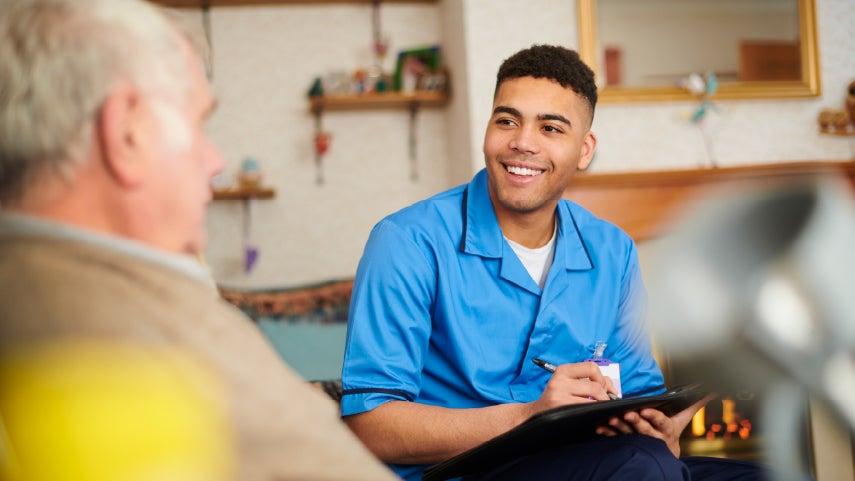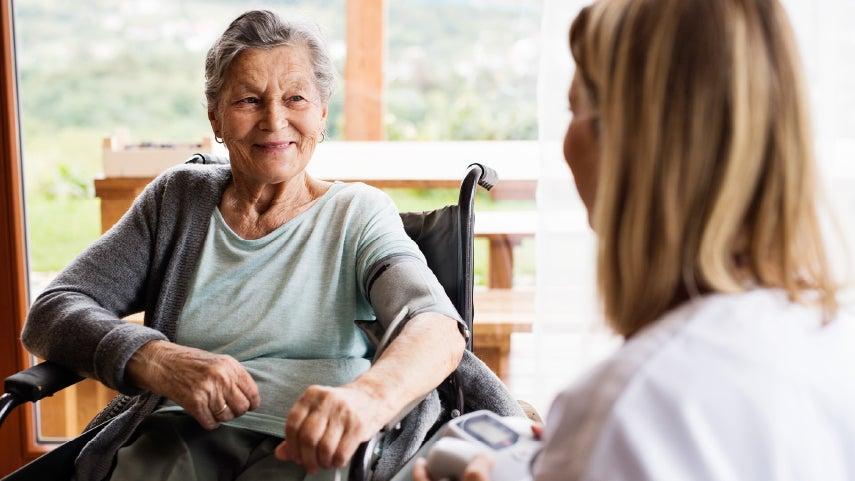
Related Topics
This is part 2 of a caregiver support series from the Validation Training Institute. Read part 1 to better understand how you can Improve Your Connection and Communication as a Caregiver.
Every human being shares the same basic human emotions: anger, fear, sadness, joy, surprise and disgust. The person or people you care for also have these emotions, and emotions tend to flow more easily when people are very old.
Often, emotions that were never expressed earlier in life suddenly start coming out. For example, my 95-year-old stepfather started expressing a lot of sexual feelings, something he never did earlier in his life. My father, a type-A, non-emotional person all his life, would tear up at almost anything when he reached his 90s. As Naomi Feil wrote back in 1982 in her first book, “Feelings bottled up for a lifetime, spill out, like a champaign cork.”
If a caregiver isn’t comfortable with these emotions, conflict or discomfort can arise. Feeling empathy for someone who is angry can be difficult for a caregiver if anger is frightening.
But indeed, finding empathy is the key to maintaining a good relationship and communicating with older adults who are disoriented.
Recognizing emotions help us relate to each other
The first step is recognizing emotions even before approaching the other person. Take a look at these photos and see if you can identify the emotion being expressed.



Make sure you look at the forehead, the eyebrows, the corners of the eyes, the nostrils, the cheeks, the mouth, the chin. These all give you signals for what the person is feeling.
When you can, check out a person’s breathing as well. Is it high in the chest or lower in the belly? Shoulders, arms and legs are also important to notice because a person’s physical posture will give you lots of information.
Once you think you know the emotional state of the other person, you can start to match what you see. This is not mimicking or exactly mirroring them. It’s just like when you’re talking with a good friend who is telling you about something awful that just happened to her. As your friend is talking and expressing her feelings, we naturally (due to the mirror neurons in our brains) match the emotion with our facial expression and often also our voice tone. This is the next step.
If you were to approach the person shown in the first photo above, how would you match him? When I look at the photo, my eyebrows go down, my forehead wrinkles, my jaw tenses and my lips narrow. I can feel that my voice tone will drop lower. I would not get too close to him but approach from the front and sit at his eye level, perhaps starting the conversation with, “You look angry. What’s going on?”
Everything beings with observation and calibration. What you do and say flow from there.
How can validation and emotive empathy help with caregiving?
In validation, we use ‘emotive empathy’ most often. This is where you clear yourself of your own thoughts and feelings and enter into the feelings of the other person. If someone is sad, you take in and match their sadness. If someone is angry, you take in and match the anger. This is not acting. It’s not a game. It’s empathy with another human being, and it connects us.
When we can experience the emotions of another person, the other feels deeply understood and accepted.
If you want to see examples of how this works, watch this short YouTube video: Observe and Calibrate: How to Communicate Better as a Caregiver
How can cognitive empathy help with caregiving?
Family members who care for relatives often find using emotive empathy a challenge. There is much history and many triggers for one’s own emotional reactions. In this case, I suggest using ‘cognitive empathy’. Cognitive empathy uses understanding and respect for the emotion being expressed, as well as being non-judgmental about it.
You follow the same steps:
- Center yourself to clear away thoughts and feelings so you can really take in what is going on in your relative.
- Observe to recognize the emotion being expressed.
- When you feel your own feelings getting in the way, take a breath and observe even more closely.
- Knowing the history of your relative allows you much deeper understanding of what is going on.
When you think you know the emotion that the person is expressing, say it: “You look really sad/angry.”
Connecting with the emotions of another person leads to a better relationship and communication. Practice these skills so they become automatic behaviors.
If you want more training, take a look at The Skill Building Blocks offered by the Validation Training Institute. These short, online, on-demand trainings guide you through learning and anchoring skills for working in a ‘person-centered’ way.



